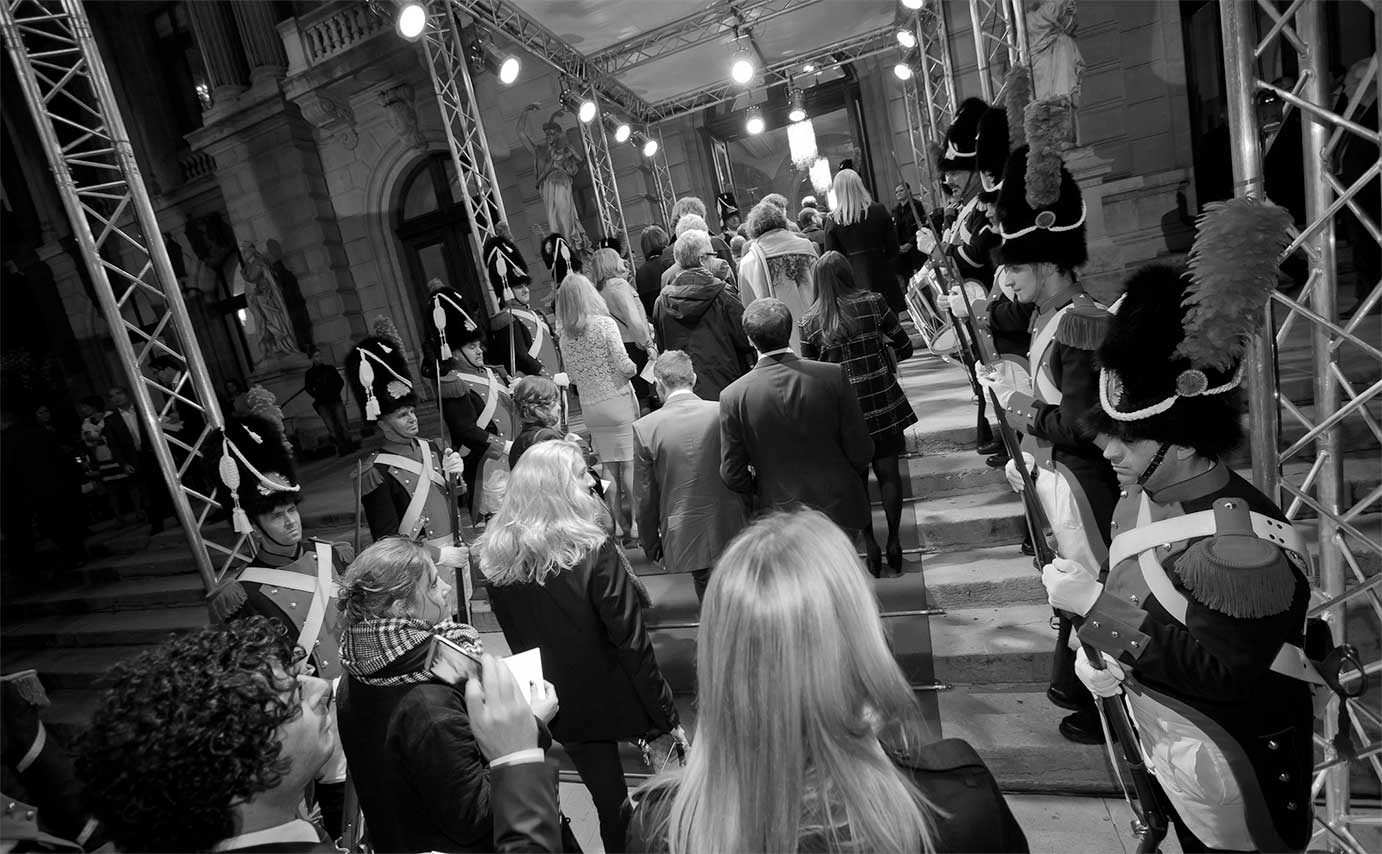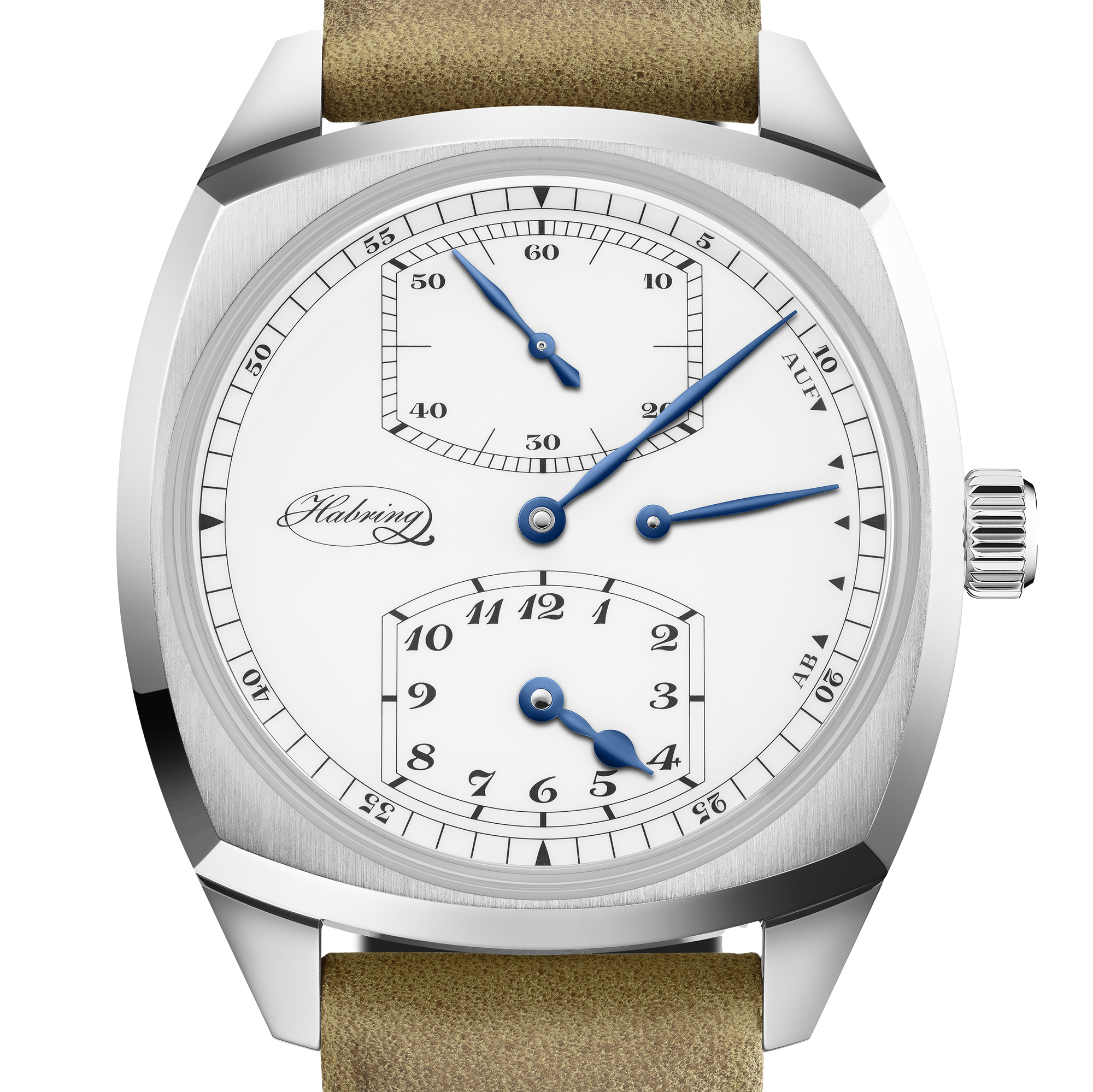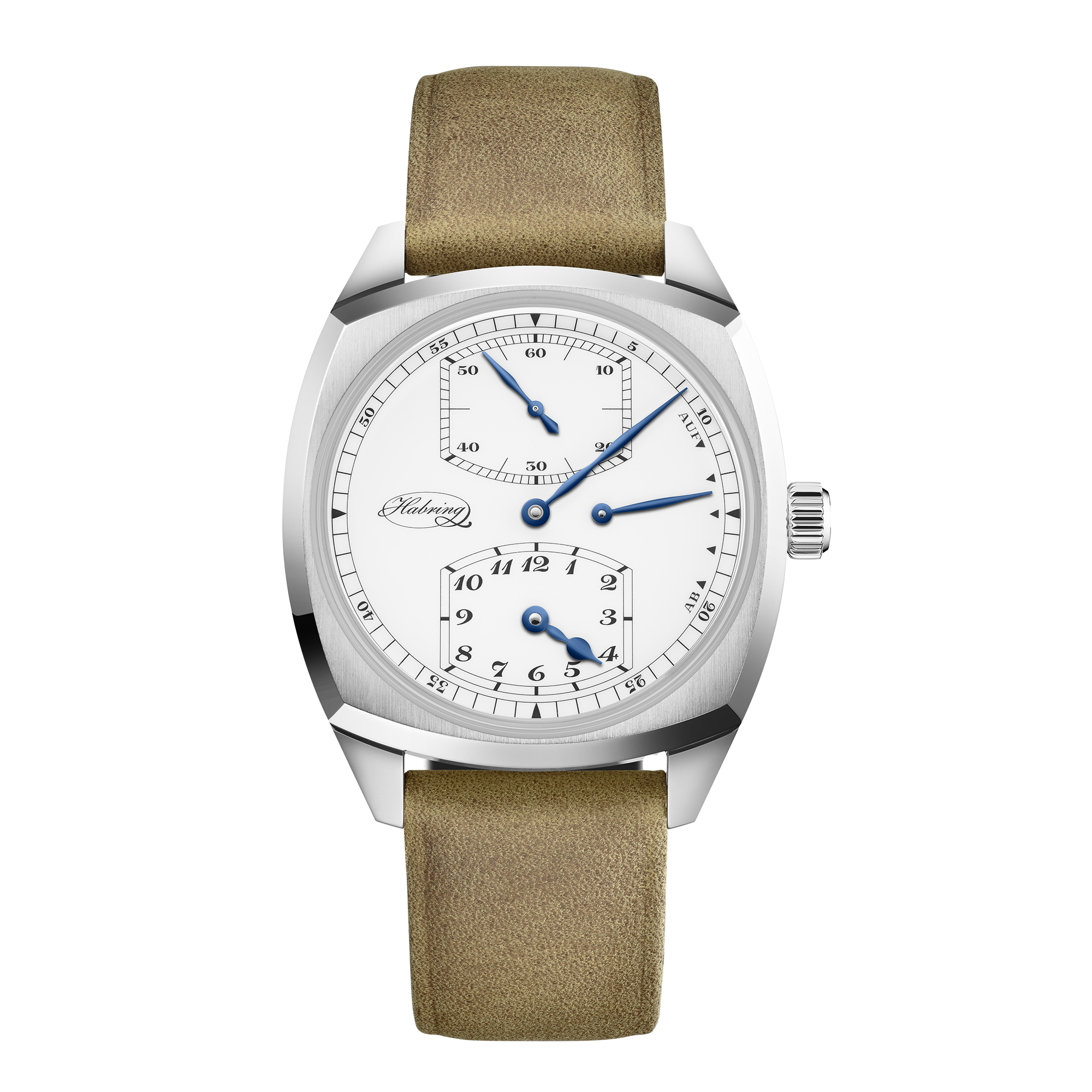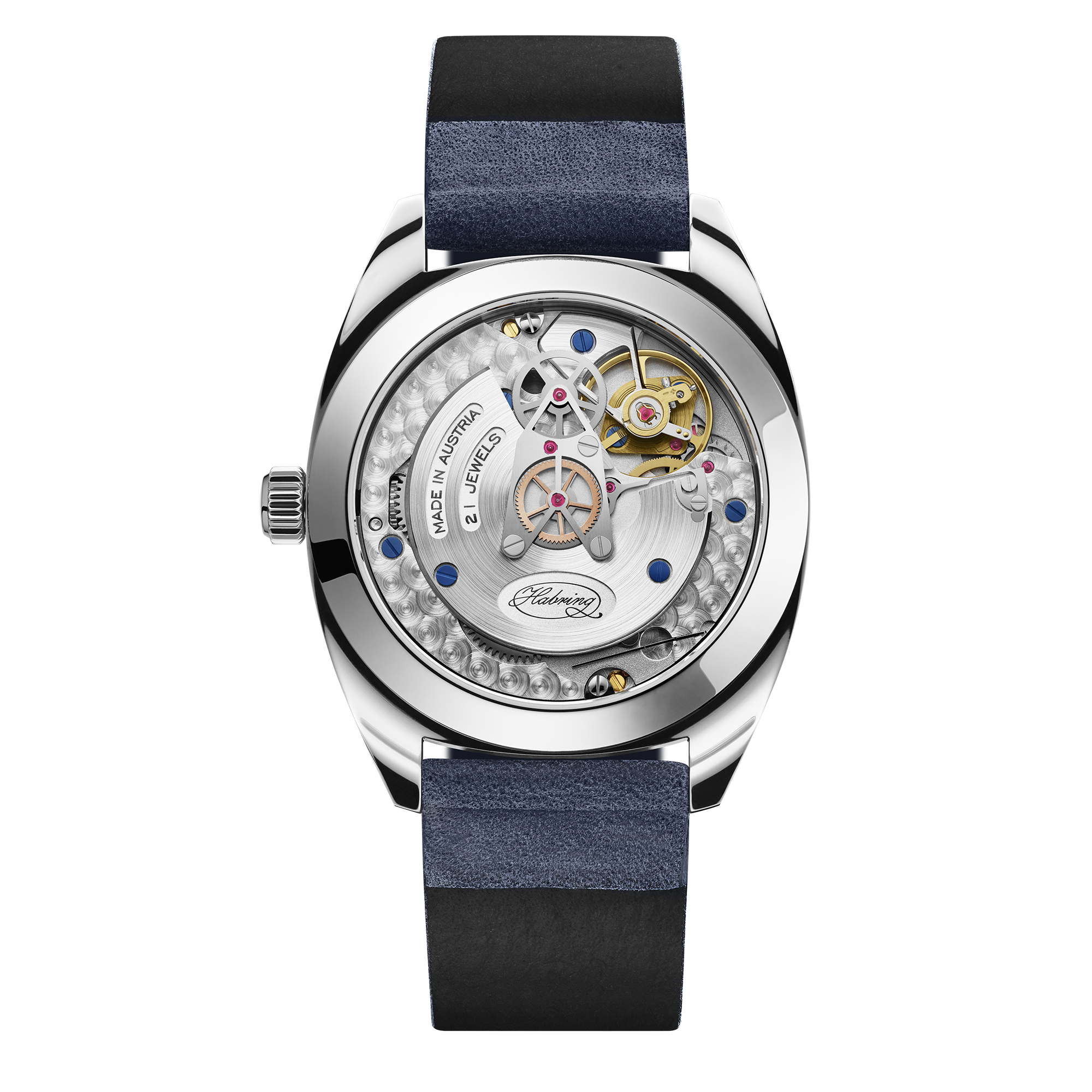
Josef
Power reserve: 48 h, 28800 vph
Josef, the special regulator with the Habring² studio's ‘sustainability gene’
The Josef model was the first regulator to be added to the collection of the South Austrian studio Habring² in 2024. A regulator with power reserve and jumping seconds. Although this model is new, the concept of sustainability has been a cornerstone of the company's business policy since its foundation and encompasses much more than just the selection of environmentally friendly materials.
Since Habring² was founded, sustainability and its implementation have played a major role for the founders. This was not for marketing reasons (paper is patient, but the environment is not), but out of inner conviction. Habring²'s strategy is to combine sustainability with mechanical excellence and visually appealing design. In more than two decades, it has succeeded in winning over watch enthusiasts in many countries around the world. However, the workshop is still based in Austria and attaches great importance to short transport routes for its suppliers. Much of the material therefore comes from the region, with the rest sourced from neighbouring countries such as Switzerland and Germany.
Habring² always takes a holistic approach to sustainability. This starts with the materials. The case of Josef and all other models is made of high-quality stainless steel. No other material can be recycled as effectively – as often as desired and without any loss of quality. It is estimated that around 80 percent of all steel ever produced is still in use today. To put it simply, Josef ticks in a case made of a particularly sustainable material. Habring² does not source this stainless steel from somewhere far away, but from the region. There, voestalpine BÖHLER produces high-performance stainless steel at the highest level of sustainability. In BÖHLER's own words, this means manufacturing stainless steel that ‘offers ecological, social and economic benefits while protecting public health and the environment throughout its entire life cycle, from raw material extraction to final disposal.’
All Habring² watch boxes also reflect the company's commitment to sustainability at first glance: the South Austrian timepieces all come in a high-quality box made of wood from sustainable forestry without chemical additives.
Fairness and appreciation
A manufacturer can only launch truly sustainable products if the manufacturer himself or herself thinks sustainably in the truest sense of the word. For Habring², sustainability is therefore not limited to the choice of materials. Among other things, the company pays attention to resource-saving supply chains. Respectful and fair treatment of employees is a matter of course in a studio headed by a woman and a man on an equal footing. Together, they are Habring². A fair and highly appreciative relationship with customers and business partners, as well as a commitment to the region, are further constants in Habring²'s sustainability philosophy.
Customers should not only expect a high-quality product, but also fair value for money. And they can rest assured that their Habring² timepiece will still be repairable many years down the line, should this ever be necessary. If this is the case, then mechanical watches prove themselves to be sustainable products per se.
Environmentally conscious watch connoisseurs can therefore enjoy their Josef and all other timepieces from Habring² with a clear conscience. And that's not all: Josef remains true to time-honoured tradition. Precision regulators with a seconds pendulum always feature a jumping second. Like every traditional regulator, Josef has its jumping second at 12 o'clock. This is due to the escapement located at the top of the movement. Many other wristwatches incorrectly display the seconds at 6 o'clock. Not so with Josef.
Speaking of tradition, the name of this model pays homage to the great Austrian watchmakers and engineers, many of whom had the first name Josef. Examples include Joseph Geist, Joseph Thaddäus Winnerl and Josef Pallweber.
Since it is five minutes to midnight for our climate, people who think sustainably should really wear a regulator. Because when they look at the dial, they realise how important and valuable every second is, and that it is time to act. Or, to quote Mahatma Gandhi: ‘The future depends on what we do today.’



